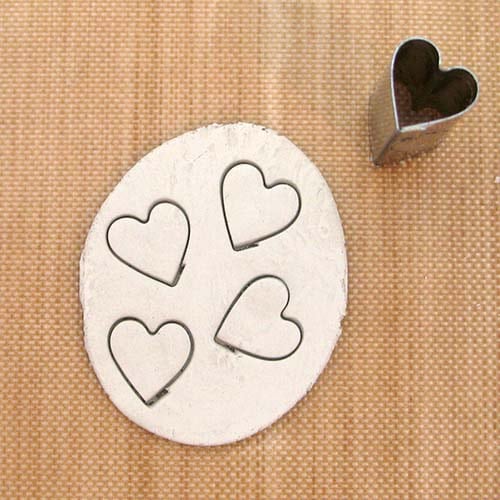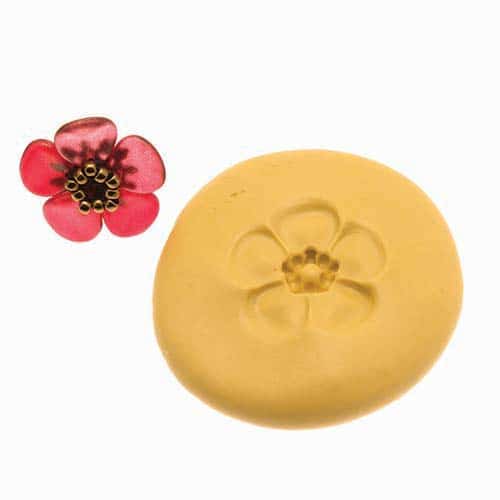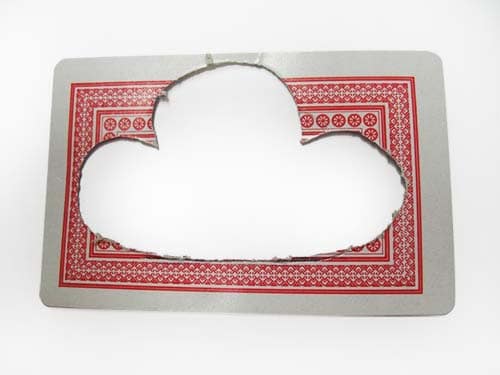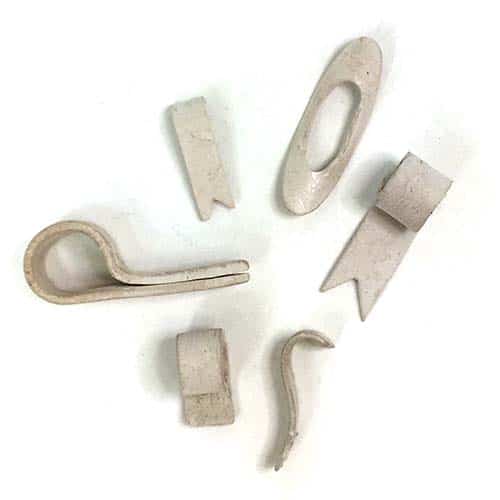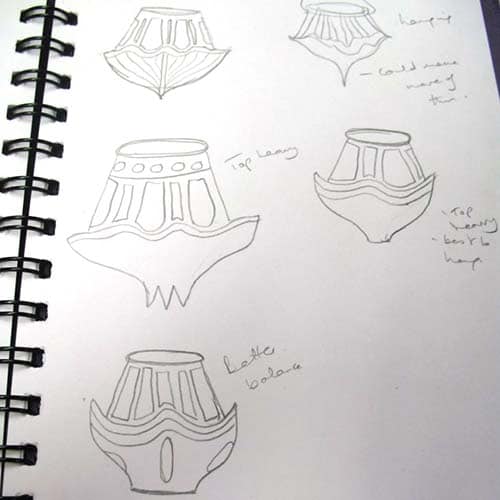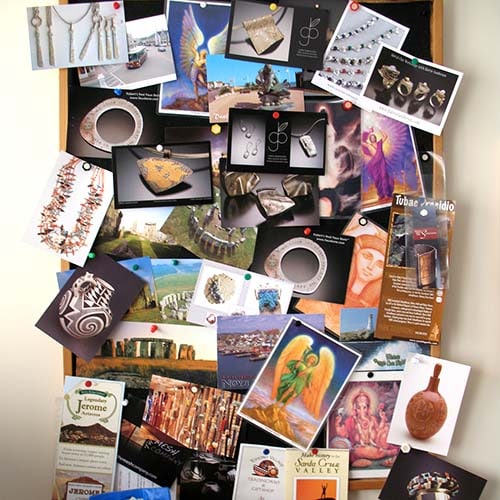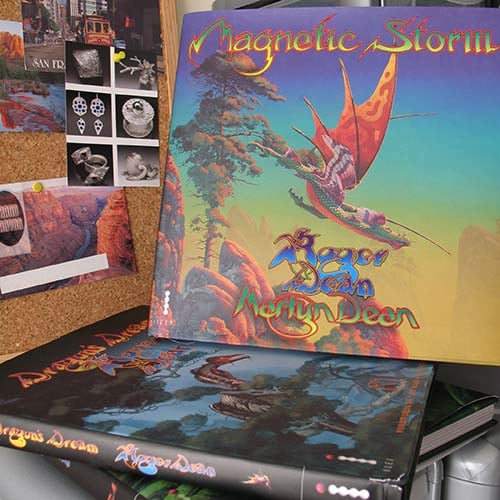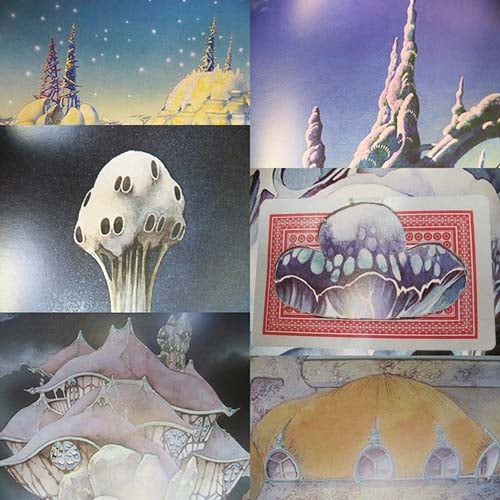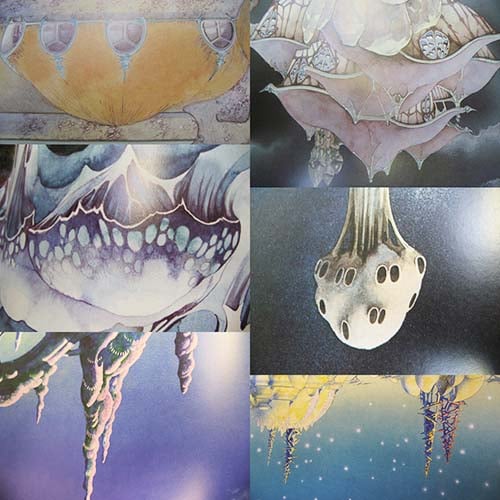Overcoming Artist Block
Artists working in every kind of media experience times when they just can’t get going. Inspiration escapes them, ideas fail to materialise, and they feel stuck. The reasons for this are many and varied but the result is the same.
If you are a casual creator who enjoys working with metal clay to make things for friends, family or just for fun, getting stuck can seem really frustrating. It’s particularly difficult for people who have day jobs with only limited time available to work on their art.
If you rely on your work to make a living, artist block can be a much bigger issue with far-reaching consequences. The feeling of panic over a deadline or the need to create a new direction in your work can be overwhelming. Nothing crushes creativity like panic.
So, what can you do if you find yourself stuck and unable to get the creative juices flowing? This article will provide some starting points for metal clay artists who find themselves stuck and unable to focus.
Starting the Thought Process
Establish why you are creating, and why you feel you have limited time or resources, just talking yourself through the details can help re-start the process.
Consider what your best-selling pieces are. If hearts always sell, then make a whole series of hearts, experimenting with shapes and textures that are different from the motifs you usually use. They may not fulfil your creative soul, but at least you are moving forward. Making simple designs that take less effort or brain power on your part can free your imagination to wander without creating the feeling that you are wasting time.
What are your competitors doing? When you’re stuck, it can feel like everyone else is doing great work while you’re losing your edge. Bear in mind that you are not looking to compare your work with your competitors. Comparing your work to someone else’s can sap your spirit and energy. This is research, so treat it as a fact-finding exercise only.
Competitor research is a useful way to get ideas and to see where the market is going generally. Of course, copying other artists designs is not ok but take a look at the common elements in their work and decipher what it is that excites your imagination.
What are they doing well? Are their influences similar or is there nothing in common? Keep an open mind and as you look at their work, make general notes. Before you start to examine their process make a list of things you might want to consider. Shape, form, size, color, texture, subject matter, theme, patina, bail type, use of stones, pearls or beads, chain type, do they use shiny finishes or matt. Or look at the principles and elements of design and use this as your starting point. Just the act of noticing specific details and taking notes can focus your mind. Learn more about design here.
Making a list of these elements and putting notes next to each can help to organise your thoughts and refine what it is that you admire in their work. See where it takes you and let things flow naturally. Avoid censoring yourself, everything is valid at this stage. The act of dismissing something as you go along stalls the process – so let your mind wander and write down everything that occurs to you, no matter how strange or different it is from your usual way of working. You can analyse the data when you’ve finished and consider what might be worth exploring further.
Make simple designs that take less effort and stress
Start Creating
Create Components
Do you use components in your work? For instance, is there a shape, form or motif that you use regularly? The action of creating something repetitive and familiar is another way of doing something without having to think about it too much. Metal clay keeps forever in the dry stage and small components like balls, flowers, leaves, bails, donuts, etc. are always useful. Sometimes spreading them out onto a work surface and moving them around can spark an idea and off you go. If nothing else, you are making elements that will be useful in the future.
Create components for your stash
Create Textures, Molds or Templates
When you’re stuck for inspiration it can sometimes help to go through your stash of textures, molds, cutters, stencils or templates to see if anything appeals to you. When you first start working with metal clay it’s natural to get these from commercial sellers or seek out things that might make good textures or molding subjects. When inspiration stalls, making your own textures, molds or templates can reenergise the creative juices and you move past your block. When creating these, try not to think about using them in anything specific, just explore the possibilities of making the resource. You may find inspiration will strike when you least expect it.
Textures
There are many ways of making your own textures and when your creativity has slowed down, it helps to get back to basics. Keep a supply of Scratch Foam, polystyrene sheets or even the foam from food packaging to doodle on. Using small ball burnishers or a ballpoint pen to create your doodles works well.
You can use silicone or rubber carving plates and blocks with Dockyard or Drake carving tools and craft knives to create textures. Pencil erasers are also an inexpensive way to experiment with carving. Relax and just let the carving tool flow, keeping the angle low, switching between gouges and V-tools of different sizes to create lines. If you find it stressful to work without a guide, draw a pattern on the surface with a pencil and follow the lines to carve the texture.
Silicone block carved texture
Molds
Roam the house to search out small items to mold. Raiding a toy or sewing box or getting out into nature can all result in finding great items to mold. If you open your mind, hardware stores, supermarkets and toy shops can also be a great source of interesting molding resources.
Two-part silicone molding compounds, like Siligum or Belicold are good choices, but you can also create molds using polymer clay. Use the molding medium you have on hand and make dimensional forms or flat textures from plants, flowers, shells, nuts and seeds, toy wheels, household objects, nuts and bolts – the list is endless. Experiment with using just a part of something like a shell or a screw, what sort of impression does the edge make? Try them out on a piece of polymer clay and then if you like what you’ve created, use the molding compound to make a lasting resource for your stash.
Earring molded with 2 part compound
Templates
Making your own template is easy if you use a bit of imagination. Thin cardboard from cereal and food packaging, file folders, and index cards are great materials for making templates and are easy to cut with a sharp craft knife. Even a playing card can make a good template. Laminate with clear packing tape before you cut the design if you want to use the template over and over, but it will probably hold up well without any covering. Just make sure it’s well lubricated when you use it.
You can also use thin vinyl or plastic, like a report cover, to make a more robust stencil. If you have an electric cutting machine, like a Silhouette or Cricut machine, you can make more elaborate stencils.
Stencil made with a playing card
Selection of dry bails
Combating Overwhelm
Often when you start working with metal clay you take classes, watch online videos, read books, and generally search out everything you can to learn more. Sometimes this can cause paralysis because you have so many ideas, you don’t know where to start. It is easy to lose the benefit of all the learning if you haven’t taken the time to cement the new knowledge and skill before moving onto the next thing. Focus on one of the techniques you’ve learned and practice just that, maybe incorporating it into something you feel proficient at.
For instance, if you’ve learned about bails, think about how you can incorporate one into something you would normally put a hole in for a jump ring. Bails are not only components that allow pendants to hang; you can also use the basic bail shapes as connectors and hinge knuckles – both hidden and visible – to give movement to all kinds of jewelry.
Selling vs. Personal Satisfaction
If you’re creating for selling it’s quite different from creating for yourself. When you’re selling your work, you are creating for your ideal customer, your followers or for the outlet you sell through. When you know what sells or what the current market trend demands, your creativity is naturally channelled to create for that. When you create for yourself, the only person you need to please is you.
Take advantage of metal clay’s ability to form objects, dry and finish them, and then decide whether you want to fire it or would rather crush it and start again if you’re not happy with the result. How about making something just for the sake of it? While it might seem like a waste of time to start a project without a clear plan, if taking time to experiment with themes and shapes can help unstick you – it’s time well spent.
Think about what you love or what message you want to give through your creations and see where it takes you.
Where Does Inspiration Come From?
Ideas can come from the all kinds of influences. Sometimes it helps to look at something completely different than jewelry, such as architecture, plant forms, or microscopic photographs of insects. Shapes, forms and colors can really inspire you if you just let the image wash over you.
Think about what interests you. Often you hear artists say that they are inspired by nature and the natural world, history, or geometric shapes. These are common themes and are readily available influences as they’re all around us and are very easy to research online. What are you interested in outside of your work? Do you have a favorite painter, sculptor, photographer etc? What about books, do you read detective novels, love stories, fantasy, or science fiction? What type of films or TV do you like? Maybe music provides ideas for you. All of these art forms can provide inspiration if you allow yourself to think outside of common themes.
When watching a film or TV, allow yourself to look away from the actor and really look at the scene. What’s in the background, what is the person wearing, is there a shape or form that interests you or a color that you really like? We live in a time where we can pause a TV show or film at will, so use this ability to quickly capture something that interests you, either by sketching it or taking a photo. If other people are distracting your focus, make a note of the show and see if you can watch it again at a later time when you can stop the action or look for images from it online.
The Meeting Place by Paul Day at St.Pancras Station, London
Be inspired by your favorite book
Geometry in nature can be inspiring
Creating an Inspiration Library
When you are creating work and being very productive, it’s easy to think you will never be stuck. Preparing for times when you may need a boost of inspiration is a good habit to get into. If you can draw, keeping a sketchbook of ideas is a great way to give yourself a resource when you need it. But even if you think you don’t draw well enough, a quick sketch will cement the idea in your head so when you review it later, you’ll remember the concept.
Your sketch book should be a private record of your ideas, things that you like that interest and inspire you. It doesn’t matter if your drawings are simple outlines covered in words that describe your ideas, they are only for you. Some artists might draw a perfect rendering, but many never get to that point. What simple drawings help retain are haphazard ideas, shapes, colors, patterns, and ideas that occur at random times during the workday. With the use of a sketchbook, these concepts can be captured to be used in the future.
Remember, you can also save a number of images on the computer and then later browse through them for inspiration.
Collect things that interest you and paste them into your sketchbook, tack them to the wall, or put them in an inspiration box. Post cards, wallpaper, wrapping paper, stamps, book and CD covers, pieces of lichen, pressed flowers and leaves, seed heads and pods, acorns and pinecones, nothing is off limits. If you can’t put the actual item into your inspiration library or box, take a picture of it and print it out or keep it in a folder on your tablet, phone or computer.
The internet is a wonderful source of images, so search words or phrases that resonate with you, and see what comes up. Search a theme word like mystery, romance, love, loss – whatever you feel like at the moment and see what comes up. As long as you don’t actually use copyrighted themes, characters or motifs, you can still keep them for inspiration. Maybe there’s a shape, form, color, texture, or just a general feeling in the image that you like. Everything that speaks to you has value so resist the urge to censor yourself and just collect everything that catches your eye.
Draw in a sketch book
Collect your favorite things on a pin board
Keep inspiring books
Using The Images
Tracing is perfectly OK and is a great way to capture a specific element of an image rather than keeping the whole thing. Here’s a simple exercise that can really help to get you unstuck and open your mind to possibilities.
- Copy and print an image you like – something from your favorite artist, an image from a book, a scrap of wallpaper, etc. that you’ve collected for your inspiration library.
- Cut a largish piece of cardboard that covers a significant portion of the image.
- Cut a window (hole) in the center that is any shape or size you like, square, round, heart, or any other shape.
- Move the window over the image and notice what shapes and forms you see when you isolate one part of the image. You are not looking for the detail of the image, just the shapes, colors, negative space etc.
- Trace anything you find interesting and move on. It’s amazing how inspiration can strike when you look at things differently.
- Turn your basic image upside down, then move the cardboard window over it again, this will give you even more ideas. Trace what interests you, and then move on.
- Keep your traced patterns to look at later and develop any you feel drawn to. You can get so many great ideas from this simple exercise.
Use a playing card stencil on a complex image to find good textures.
View things at a different angle to see new inspiration.
Take A Field Trip
Whatever form your work normally takes, looking at paintings, drawings, etchings, prints, architecture, sculpture, textiles, ceramics, photography, wood carving, fashion, glass etc. can give you ideas and inspiration.
Taking a field trip to an art gallery or museum can be a wonderful way to open your mind to new designs. Think about what interests you at first but challenge yourself to look at galleries you wouldn’t normally be attracted to. You don’t need to love the work exhibited, you just need to look at it and see if there’s something about it that piques your curiosity. The more open minded you are, the more inspiration you’ll get from a field trip.
Natural History Museum, London
Simple Exercises to Break the Block
Use repetition
Choose a shape from a stencil or template and repeatedly draw it in rows that cover a sheet of plain paper. Challenge yourself to create a different treatment for each shape, adding designs inside, outside or over the edges of the outline. Make sure there’s some white space around each shape so your drawings can extend beyond the boundaries or you have room to make notes.
Don’t think in terms of these being potential pieces of jewelry, just focus on playing with the shape and do something different to each one. Don’t use an eraser, just see what happens when you explore the same shape in many different ways.
Repeat the same shape and draw different patterns
Clean up your workspace
Doing something that involves your creative space but isn’t pushing you to be creative can really help to move you forward. Take everything off your table and wipe it clean. Throw away trash and return scattered items to their proper place. Then replace each thing, cleaning it thoroughly as you go. When your workspace is clean and tidy, it can be a great motivator to start doing something.
Look at the work of other metal clay artists
Choose an artist whose work you really like and examine the most complicated piece of their work with a critical eye. Ask yourself, ‘how did s/he do that?’ and see if you can work out how you would do what they did. If you were making the piece, how would you do it differently, what changes would you make?
Play with polymer clay
This is a medium that is very similar to metal clay but much less expensive and is a great material to experiment with. Choose a color that is close to the metal clay you like to work with – silver, copper, bronze etc. Then just play for a while. Don’t think about it too much, just roll it in your hands to warm it up and make it nice and pliable, then see what your hands want to create with it. Even if you don’t make anything interesting, you’ve done something with your hands and that alone can kick start your creative mojo.
Think about someone who means something to you
Perhaps an old friend, family member or work colleague. Or a famous person, someone you admire, or someone from history, film or fiction. If you were creating something for that person, what would it be? Think about them, their personality, achievements, loves and hates, what inspired them, and then consider what they might like as a gift, a memento of their achievements, an award or just a personal token of your affection. Create it in metal clay or polymer clay.
Create a talisman of protection
You can do this for yourself or for a loved one. What symbols and motifs would you use in the design? Research symbols connected to the thing you are protecting them from. Get specific. What would be a good form for this – pendant, brooch, ring or…? What shape would it take, will you use stones or beads, will it be a complex design or something simple?
It’s important to recognise that sometimes, being stuck or lacking inspiration is your brain’s way of saying you need to rest. Always take regular breaks when you’re working but if you are mentally exhausted, it often manifests as a lack of motivation or inspiration. Taking care of your physical, mental and emotional wellbeing will make you a better artist so have a rest, take time away from your work bench and recharge your batteries.
Everyone has times when they feel stuck and unable to create. Remember you are not alone and part of being an artist is using your feelings and emotions in a creative way, to encourage, challenge or inspire others.

